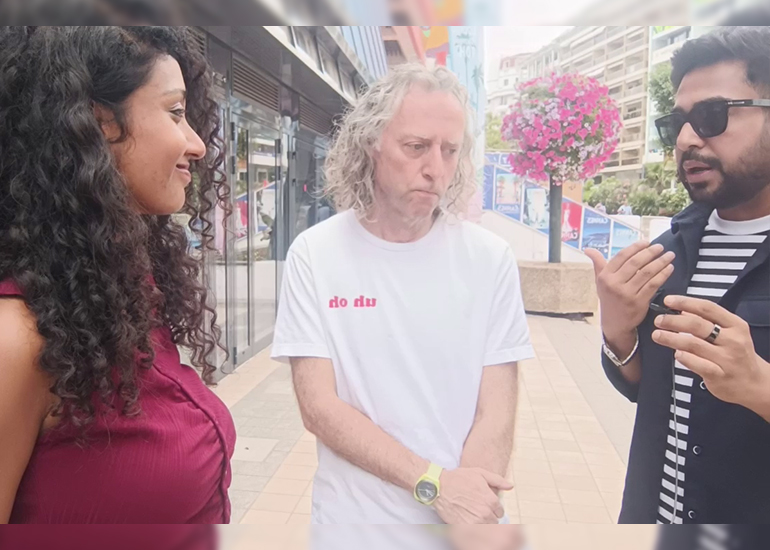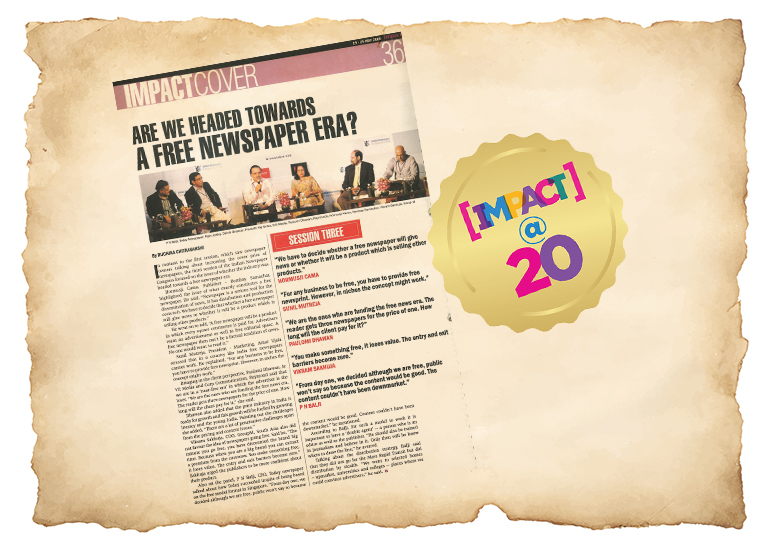Prof. Stuart Cunningham of the Queensland University of Technology and Prof. David Craig of the University of Southern California explain the freshly minted term ‘Communitainment’ as they look to map the new screen ecology of social media entertainment
BY SIMRAN SABHERWAL
Communitainment – that’s the word coined by Prof. Stuart Cunningham, Professor of Media and Communications, Queensland University of Technology and Prof. David Craig, Clinical Assistant Professor at USC Annenberg’s School for Communication and Journalism. This term reflects the change in the entertainment industry with the rise of ‘social media entertainment’ and new digital platforms thereby creating a protoindustry, that is defined by the interactivity with content and the community that consumes this content. This project started with Cunningham looking to identify how YouTube and content creators were starting to monetize and professionalize this platform. With Craig on board, they realized the initial project was narrow focused and the duo started to understand the huge vastly complex and rapidly iterative space emerging around this new ‘proto-industry’ and decided to research the ecosystem ground up. Cunningham and Craig conducted over 100 interviews with multiple social media platforms such as Facebook, Vimeo, Vine, Instagram, Twitter, Snapchat, Periscope. In addition they also interviewed content creators, Multi-Channel Networks, digital studios, influencers, ad agencies, PR agencies and third party data firms. They are now taking the project global. Cunningham and Craig were at Godrej India Culture Lab on May 27, 2016 for a very special talk based on their recent research across globe, including fieldwork in India, China, and across Europe. Here are excerpts from their conversation with IMPACT.
Q] How did you coin the phrase, Communitainment?
Cunningham: The emergence of a whole new proto-industry that we call social media entertainment or communitainment picks on the meanings of the word community of communication and of co-modification. There has always been a distinction between main media and alternative media with main media getting advertising while the niche or the alternative media struggled to make ends meet. Today, the alternative media is starting to attract very significant sums of advertising money and brand interest. YouTube really started it and now it has proliferated to other platforms. Some of the big genres/verticals are comedy – pranking, gameplay , vlogging and beauty and style tips. This year digital advertising will top broadcasting and cable advertising in the U.S and the rest of the world will also follow this trend. Craig: The content in this space is communal in nature ie. people go on to share time together and hang out with friends. In the case of vlogging, creators get paid to talk about the things/products they like and care about. Also, it’s no longer audiences, it’s communities and it’s no longer channels, it’s platforms and it’s no longer content creators, it’s communitainers. They are engaging in new types of innovation and entrepreneurism in this space. While these platforms may be global, the kind of entrepreneurism, content innovation, co-modification, and the types of communities emerging on the national, cultural and in the sub-cultural are going to be different and local.
Q] What are the key insights and takeaways from the research?
Craig: Content creators are operating across multiple platforms, they are not just YouTubers, but they are multi-platformers. Traditional media consist of producers, executives, managers and talent agents but in this space content creators are all of the above. Yes they operate with tremendous precarity and they could make a mistake but they are also finding unique ways and strategies to generate revenue. A distinction in India, from what we are seeing in the West, is that the social media entertainment industry has been able to tap in to the growing cosmopolitan global Indian and urban upscale market. That seems to have been the first wave. But we anticipate that this is the tip of the iceberg. Once 4G comes and the cost and means of access to the mobile comes down and with the world’s largest audience under 35, we will witness the beginning of what is going to be a really transformative kind of process. How this informs television, film, print and music? Well, we believe it will be a corevolutionary process. Film didn’t disappear when television came on, but it certainly changed the way it operated and we are seeing this in the States in terms of reverse engineering with Television and advertising adapting to social media.
Q] America has dominated content when it comes to films and television. How is this reflected here?
Cunningham: 80% of YouTube views are from outside the States, so it’s a global phenomenon. The question that we are really interested in is, how different is this in different countries? This isn’t like the old days of Hollywood domination as it has been associated with cultural and media imperialism. This is very different because these are U.S. based platforms but they don’t come into countries with content IP that they are looking to sell but they get people interested in their own local material. These are U.S. platforms, and obviously the profits that accrue ultimately accrue to U.S. owned companies, but the revenue content is being shared to some extent at least with creators all around the world.
Q] What are the challenges?
Craig: Many platforms are struggling for sustainability. YouTube has only recently made a profit and is doing quite well only in the last year or two but platforms like Twitter,Vine and Periscope are struggling and Facebook is now entering this space as they see it as an opportunity. If we only look at it through the lens of platforms, the world is flat. But if you look at it through the lens of content/creators and even monetization, it is extremely diverse and informed. YouTube and the social media entertainment space is fostering diversity.
Q] How do you see Multi Channel Networks (MCN) evolving?
Cunningham: In the States, MCNs are being squeezed from above and below. YouTube was very active in getting companies to become an MCN in order to deal with this explosion of content that YouTube itself brought forward. Now YouTube can see the real money is in brand deals, branded content and direct relationships with brands and advertisers. So, they are creating their own direct relationships with brands and are starting to eat some of the MCNs lunch. And, if you are a successful content creator, the less you need an MCN because the MCN takes your cut. 55:45 is the standard split between the YouTube creator and YouTube, but of that 55, the MCN takes another 10 or 15. So, a successful creator is looking to cut them out of the deal. That’s why MCNs are being squeezed from below as well as from above and a lot of people in the States think that MCN is an endangered species.
Craig: MCNs are going across multiple platforms and also differentiating their surfaces. Some of them are becoming talent focused, some IP focused, some more advertiser focused, some data focused and some tech-focused. In the last three years, they have had $2.5 billion dollars worth of mergers, acquisition and investment from traditional media, both within and outside U.S.
Q] How do you see these content creators communicating to their followers?
Craig: The biggest takeaway for us was the surprise that content creators spend half or even less than half of their time creating content that they then distribute across different platforms. We tend to think of them as content creators from the platform side. Advertisers like to call them influencers. The truth is they spent almost half of their time developing and engaging a community. They like, they share, they comment, they post, they go on platforms and talk about their work over there. That is labour and time spent for which we do not have any equivalency in traditional media. So that’s a tremendously unique kind of creative practice.
Q] What is the key to make content viral?
Cunningham: Virality is a strange metaphor for a start because it implies a disease and it’s got some bad connotation but no one can control it. What becomes popular is marvellously unknown. The successful creators have got amazingly engaging personalities. They work incredibly hard on what they do. They take a very business-like and a very creative approach and are incredibly open to feedback and engagement. However, you can’t often tell what goes viral but you have plenty of people doing big data analytics on what is going to work.
Q] What is the way ahead when it comes to monetization?
Craig: This industry has its own ecology and each content creator has to develop an ecosystem. That ecosystem includes not only generating revenue across platforms that allow for partnership but also engaging with advertisers and brands. There are also an infinite number of other revenue streams -whether it’s working in traditional media, selling books, appearing on TV shows, hosting events as well as live fan base events which are popular. It has to be spread across multiple revenue streams and has to be platform agnostic. You have to be present on platforms that don’t necessarily offer monetization. You can be paid through influencer marketing and promote brands on platforms that don’t necessarily have pre-roll or banner-ads. But it’s important to understand that even if they don’t offer those opportunities, you still build community there and the aggregation of a large community will ultimately make for sustainable model and include multiple revenues. Distribution matters, content matters, talent matters, audiences matter, but in this space strategy matters and content creators are all very strategic, remarkably so, even at very young ages.
Q] How do you see things panning out in the future?
Cunningham: Advertising will continue to trend towards digital. How much it trends towards social media will be different in different markets, but this is only going to grow. How far it grows and how much it displaces, what we now call established media, well no one can really tell. It will be a much more variegated landscape.
@ FEEDBACK simran.sabherwal@exchange4media.com
























